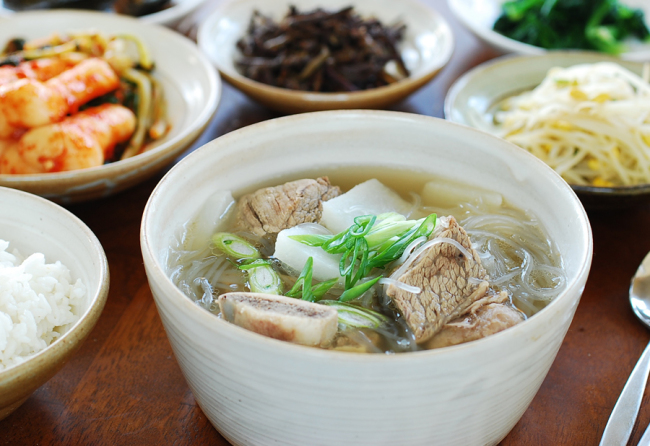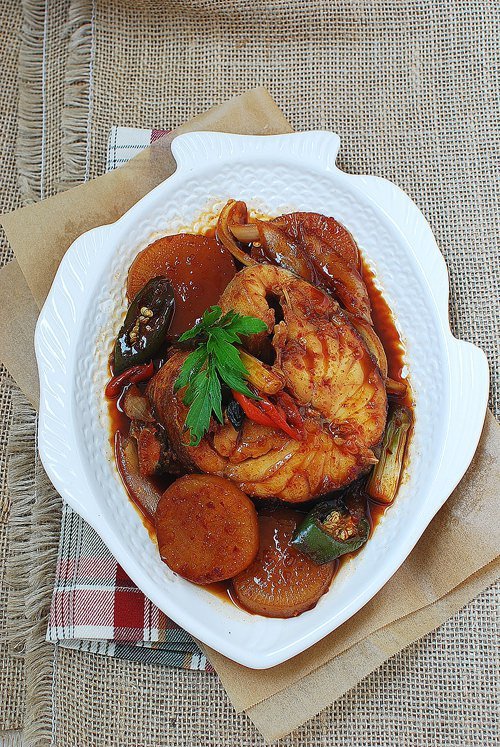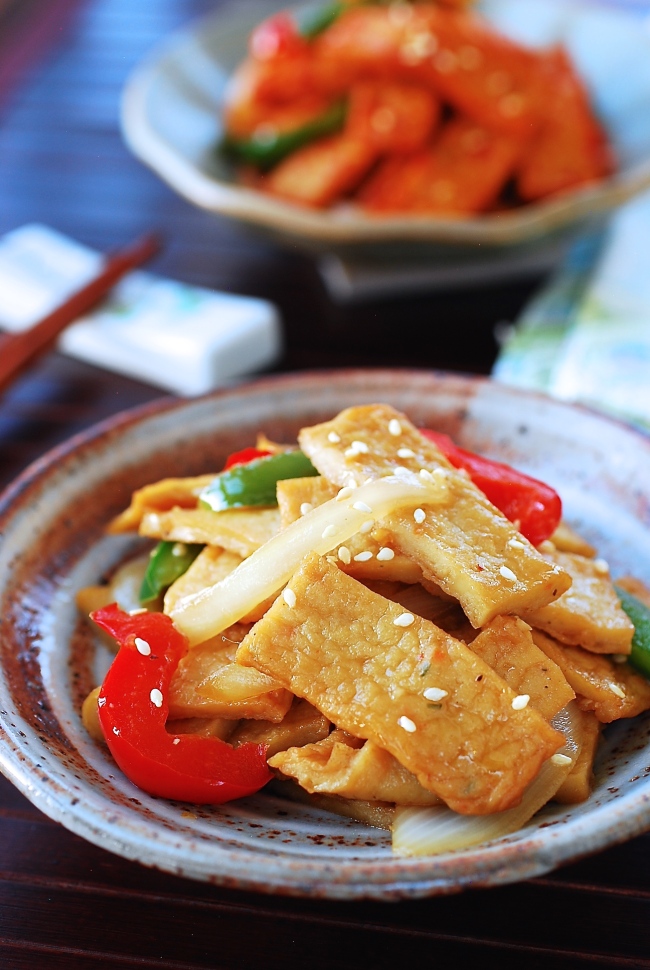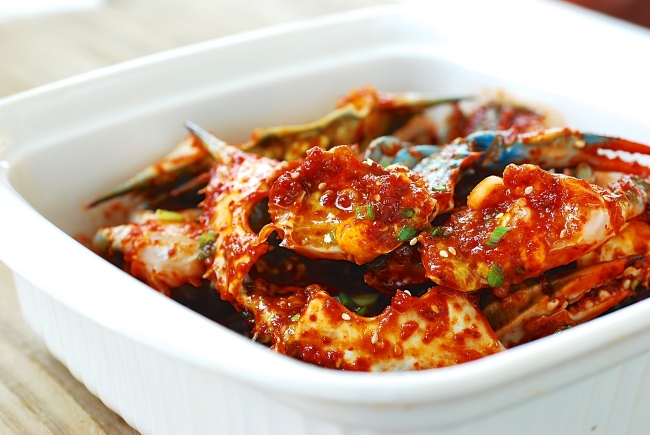Galbitang is a hearty, nourishing soup made with beef short ribs. Typically, the ribs are boiled along with Korean radish (mu), onion, garlic, and ginger until fork tender. A good soup soy sauce is also important for the flavor of this soup. It’s common to add starch noodles (dangmyeon) to the soup at the end of cooking. Beef short ribs are an expensive cut of meat, so this soup is considered a luxury among Korean soups and often served for special occasions such as wedding receptions.
Galbitang is fairly simple to make. However, you need to know a few tips to give the soup the nice, clean taste it’s known for. First, you will have to soak the ribs in cold water to draw out as much blood as you can. Then, blanch them in boiling water to remove any remaining blood and rinse everything nicely before boiling them again. It should be boiled over high heat for the first 30 minutes to draw out flavor from the bones. The second part of the boiling is done over reduced heat until the meat reaches the desired tenderness, which takes about an hour to an hour and a half, depending on the ribs.
Ingredients:
About 1.2 kilograms short ribs
450 grams Korean radish
1 medium onion
2 large scallions
8 plump garlic cloves
3 thin ginger slices
Soup soy sauce
Salt and pepper
80 grams starch noodles (dangmyeon), soaked in warm water for 30 minutes
1 teaspoon minced garlic
2 scallions, finely chopped
Soak the ribs for an hour or longer in cold water. Change the water half way through if you can. Drain.
Bring a large pot of water to a boil. Drop the ribs in. Let it come back to a boil. This will take about 7 to 8 minutes.
Drain the ribs. Wash the ribs under running water. Clean the pot.
Return the ribs back to the pot. Add 14 cups of water, radish, onion, garlic and ginger. Add 2 tablespoons of soup soy sauce and 1 teaspoon of salt. Bring it to a boil. Continue to boil, uncovered, for 30 minutes over high heat.
Reduce the heat to medium low. Remove all the vegetables. Transfer the radish to a cutting board. Discard the other vegetables. Add 2 cups of boiling water. Continue to boil, covered, for about an hour or an hour and a half until the meat is tender.
Add 1 teaspoon of minced garlic and the noodles a few minutes before turning the heat off. Cut the radish into bite size pieces and add to the soup. Bring everything to a boil again. Salt and pepper to taste. Serve with the chopped scallions.
Galbitang is fairly simple to make. However, you need to know a few tips to give the soup the nice, clean taste it’s known for. First, you will have to soak the ribs in cold water to draw out as much blood as you can. Then, blanch them in boiling water to remove any remaining blood and rinse everything nicely before boiling them again. It should be boiled over high heat for the first 30 minutes to draw out flavor from the bones. The second part of the boiling is done over reduced heat until the meat reaches the desired tenderness, which takes about an hour to an hour and a half, depending on the ribs.
 |
| Galbitang (beef short rib soup) (Korean Bapsang) |
Ingredients:
About 1.2 kilograms short ribs
450 grams Korean radish
1 medium onion
2 large scallions
8 plump garlic cloves
3 thin ginger slices
Soup soy sauce
Salt and pepper
80 grams starch noodles (dangmyeon), soaked in warm water for 30 minutes
1 teaspoon minced garlic
2 scallions, finely chopped
Soak the ribs for an hour or longer in cold water. Change the water half way through if you can. Drain.
Bring a large pot of water to a boil. Drop the ribs in. Let it come back to a boil. This will take about 7 to 8 minutes.
Drain the ribs. Wash the ribs under running water. Clean the pot.
Return the ribs back to the pot. Add 14 cups of water, radish, onion, garlic and ginger. Add 2 tablespoons of soup soy sauce and 1 teaspoon of salt. Bring it to a boil. Continue to boil, uncovered, for 30 minutes over high heat.
Reduce the heat to medium low. Remove all the vegetables. Transfer the radish to a cutting board. Discard the other vegetables. Add 2 cups of boiling water. Continue to boil, covered, for about an hour or an hour and a half until the meat is tender.
Add 1 teaspoon of minced garlic and the noodles a few minutes before turning the heat off. Cut the radish into bite size pieces and add to the soup. Bring everything to a boil again. Salt and pepper to taste. Serve with the chopped scallions.





